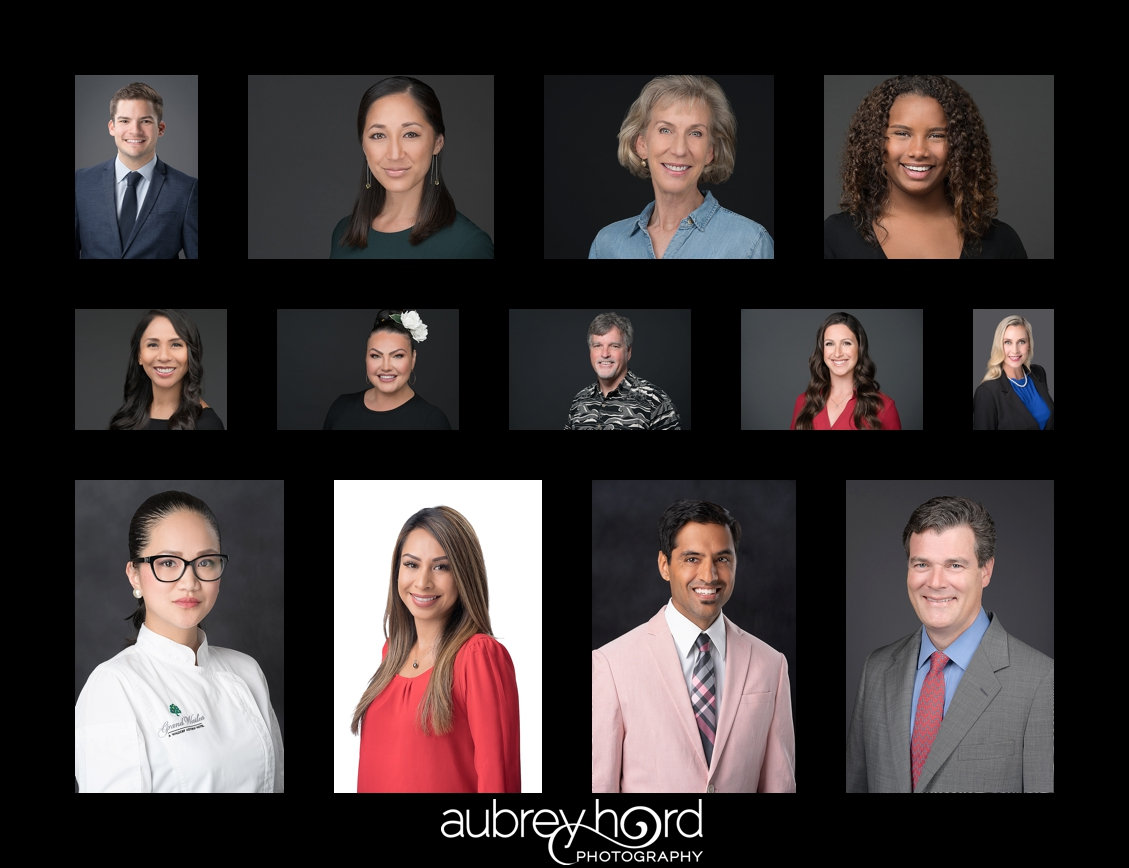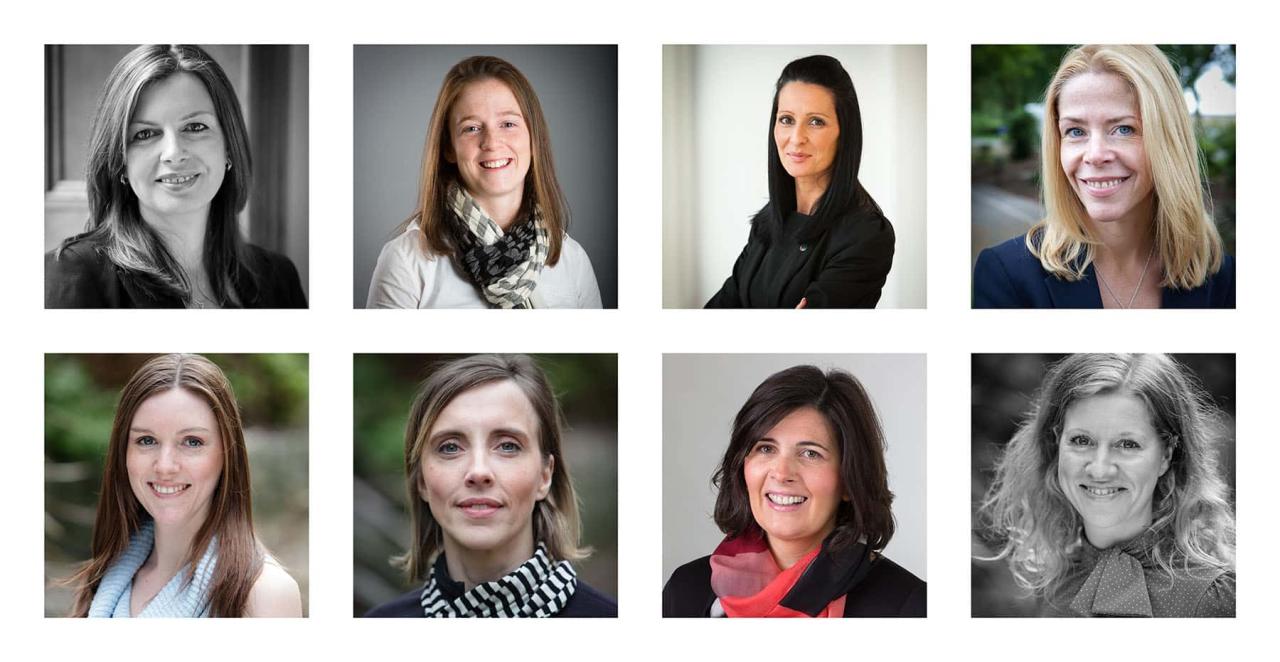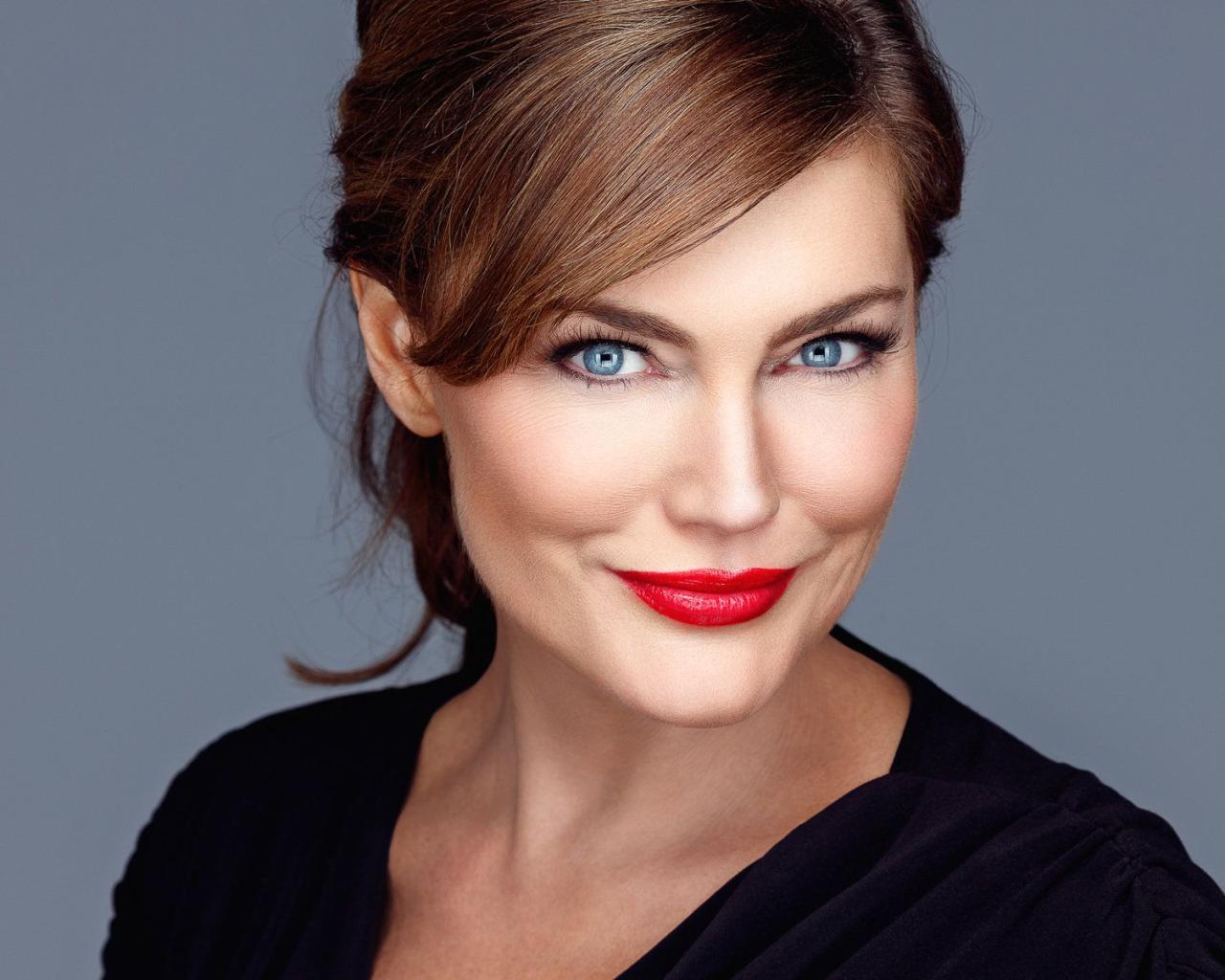What to wear for business headshots? This seemingly simple question holds significant weight in shaping your professional image. Your headshot is often the first impression you make, acting as a visual representation of your brand and expertise. Choosing the right outfit, from color and fabric to fit and style, can significantly impact how you’re perceived – projecting confidence, approachability, or authority depending on your chosen look. This guide will walk you through selecting the perfect attire to create a compelling and memorable business headshot.
We’ll explore attire appropriate for various industries, discuss the subtle yet powerful impact of color psychology, and delve into the details of fabric choices and their appearance under studio lighting. We’ll also cover essential grooming tips, posing techniques, and background considerations to ensure your headshot effectively communicates your professionalism and personality. From formal settings to more relaxed environments, we’ll equip you with the knowledge to make informed decisions and create a headshot that truly represents you and your brand.
Clothing Choices for Business Headshots

Choosing the right attire for your business headshot is crucial; it’s the first visual impression you make on potential clients, partners, and employers. The goal is to project professionalism, competence, and approachability, all while reflecting your personal brand and the culture of your industry. The clothing you choose significantly impacts how you are perceived, so careful consideration is key.
Attire for Different Industries
Different industries have varying dress codes, and your headshot should reflect this. In finance, a more formal look, such as a tailored suit, is generally expected. The seriousness and trustworthiness conveyed by a suit align well with the industry’s image. Conversely, in the tech industry, a business casual look – a blazer with a button-down shirt or a stylish sweater – might be more appropriate. This reflects the industry’s innovative and less rigidly structured culture. Creative industries, such as design or marketing, allow for more stylistic freedom, but still require a polished and professional appearance. A well-fitting dress or a sharp shirt and trousers can convey creativity while maintaining a professional demeanor.
The Impact of Color Choice
Color psychology plays a significant role in how your headshot is perceived. Darker, neutral colors like navy blue, charcoal gray, and black project confidence and authority. These colors are classic, timeless, and universally flattering under studio lighting. They also tend to minimize distractions and keep the focus on your face and expression. While lighter colors, such as light blues and pastels, can be suitable, they can sometimes appear less authoritative in a business context. Avoid bright, bold colors, as these can be distracting and detract from the overall professionalism of the image. The goal is to present a polished and sophisticated image, not to make a bold fashion statement.
Fabric and Texture Selection
The choice of fabric and texture significantly affects the final look of your headshot. Natural fabrics like wool, cotton, and linen generally photograph well, offering a sophisticated and textured appearance. They drape well and avoid the shiny, reflective quality that some synthetic fabrics can have under studio lights. Synthetic fabrics, while often more wrinkle-resistant, can appear overly shiny or plasticky under the bright lights typically used in professional headshot photography. This shine can be distracting and detract from the overall image quality. Consider the texture of the fabric; a subtly textured fabric adds visual interest without being distracting. Avoid fabrics with busy patterns or large logos, as these can be distracting and take away from the focus on you.
Outfit Options for Different Formality Levels
| Formality Level | Top | Bottom | Shoes | Accessories |
|---|---|---|---|---|
| Formal | Suit jacket and collared shirt/blouse | Dress pants or skirt | Dress shoes (closed-toe) | Minimal jewelry, watch |
| Business Casual | Blazer or sweater | Dress pants or skirt, or well-fitting jeans | Loafers or oxfords | Minimal jewelry, watch (optional) |
| Casual | Button-down shirt or nice blouse | Dark-wash jeans or chinos | Clean sneakers or loafers | Minimal or no accessories |
Styling and Grooming for Professional Headshots: What To Wear For Business Headshots

A professional headshot is more than just a photograph; it’s a visual representation of your brand. Careful attention to styling and grooming is crucial for creating a polished and impactful image that conveys competence and confidence. Overlooking these details can detract from the overall professionalism of the headshot, potentially undermining your credibility. This section will delve into the specifics of hair, makeup, accessories, and overall grooming to ensure your headshot reflects your best self.
Hair and Makeup for a Polished Appearance
Hair and makeup play a significant role in achieving a polished look in professional headshots. For women, a natural and professional makeup application is recommended, focusing on even skin tone, subtly defined eyes, and naturally enhanced lips. Avoid overly heavy makeup or trendy styles that might date quickly. For men, attention to detail is key; neatly groomed hair, a clean shave or well-maintained beard, and attention to any blemishes are important. A light touch-up with concealer or powder can help create a clean, polished appearance.
- Women’s Hair: Consider a style that complements your facial features and attire. A sleek updo, loose waves, or a neatly styled bob can all work well, depending on your hair length and texture. Avoid overly fussy styles or anything that distracts from your face.
- Men’s Hair: A neatly trimmed and styled haircut is essential. Consider your hair length and texture when choosing a style. A classic short back and sides, a side part, or a slightly longer, textured style can all work well, depending on your personal preference and overall look. Avoid styles that are too messy or unkempt.
- Makeup Application: For women, a professional makeup application is recommended, focusing on a natural and polished look. A makeup artist can help you achieve the perfect balance between enhancing your features and maintaining a professional appearance. Men should ensure their skin is clean and well-groomed, using concealer or powder to address any blemishes or imperfections.
The Impact of Accessories on the Overall Image
Accessories can either enhance or detract from your headshot. Careful selection is crucial to avoid creating a cluttered or unprofessional look. Overly large or distracting jewelry can draw attention away from your face, while the wrong glasses can cast shadows or obscure your eyes. A subtle and understated approach is generally best.
- Dos:
- Subtle jewelry (small earrings or a simple necklace)
- Professional-looking watches (simple and understated designs)
- Glasses that complement your face shape and attire (avoid overly thick frames or brightly colored lenses)
- Don’ts:
- Large, flashy jewelry that distracts from your face
- Overly trendy or distracting accessories
- Glasses that are damaged or ill-fitting
Choosing Hairstyles that Complement Facial Features and Attire
The right hairstyle can enhance your facial features and create a cohesive look with your outfit. Consider your face shape, hair texture, and the overall style of your clothing when choosing a hairstyle for your headshot. For example, a long, flowing hairstyle might complement a flowing dress, while a sleek updo might be more appropriate for a business suit. Short hair can be styled in a variety of ways to highlight different features, and longer hair can be styled to create different levels of formality.
Common Grooming Mistakes to Avoid Before a Headshot Session
Neglecting even minor grooming details can significantly impact the final image. A few common mistakes include unkempt eyebrows, visible blemishes, and uneven skin tone. These seemingly small issues can become distractingly prominent in a close-up headshot. Addressing these concerns beforehand will ensure a polished and professional outcome.
- Unkempt eyebrows: Unkempt eyebrows can create a disheveled appearance. Consider getting your eyebrows professionally shaped or neatly trimming them yourself before your headshot session.
- Visible blemishes: Blemishes and imperfections can be easily minimized with concealer or other makeup. Address any visible blemishes before your session to ensure a clean and polished look.
- Uneven skin tone: Uneven skin tone can make you appear tired or unhealthy. Use foundation or other makeup to create an even skin tone before your headshot session.
- Dry or chapped lips: Dry or chapped lips can be distracting in a headshot. Use lip balm or other lip products to ensure your lips are soft and hydrated.
Posing and Expression for Business Headshots

A successful business headshot goes beyond just clothing and grooming; it’s about conveying the right message through posing and expression. The way you present yourself visually impacts how potential clients, colleagues, and employers perceive you and your brand. Mastering posing techniques and facial expressions is crucial for creating a headshot that accurately reflects your professional image.
Effective Posing Techniques
Effective posing involves a combination of posture, body language, and hand placement to create a confident and approachable image. Avoid stiff, unnatural poses. Instead, aim for relaxed yet purposeful stances that showcase your personality. Here’s a step-by-step guide:
- The “Slight Turn”: Turn your body slightly away from the camera, then angle your head back towards the lens. This creates a more dynamic and flattering pose than facing the camera directly. Imagine a three-quarter view, engaging your shoulders and torso in a natural, relaxed turn.
- Hand Placement: Avoid having your hands dangling awkwardly. Rest them naturally at your sides, gently clasp them in front of you, or use them to subtly interact with props (if appropriate). Consider placing one hand lightly on a hip or using a hand gesture that reflects your personality and profession. Avoid tense or unnatural hand positions.
- Posture and Alignment: Stand tall with good posture, shoulders relaxed and back straight. Avoid slouching or hunching, as this can make you appear less confident and professional. Imagine a string gently pulling you upwards from the crown of your head.
- Weight Distribution: Shift your weight slightly to one leg to create a more natural and relaxed stance. Avoid standing rigidly with your weight evenly distributed. This small shift adds a sense of dynamism to the pose.
- Head Tilt: A slight head tilt can add a touch of approachability and warmth to your headshot. However, avoid tilting your head too much, as this can appear unnatural or even childish. A subtle tilt is sufficient.
Impact of Body Language and Posture, What to wear for business headshots
Body language significantly influences the perceived professionalism in a headshot. Open postures, like uncrossed arms and a relaxed stance, convey confidence and approachability. Conversely, closed-off postures, such as crossed arms or a hunched back, can create an impression of defensiveness or insecurity. Maintaining eye contact with the camera further enhances the sense of engagement and confidence. A straight spine and lifted chin communicate assertiveness and self-assurance, while slumped shoulders and a downcast gaze can project weakness or lack of confidence. Consider the message each posture conveys and choose accordingly to align with your professional image.
Achieving a Natural and Genuine Smile
A genuine smile is essential for a successful business headshot. Forced smiles often look unnatural and can detract from your professional image. To achieve a natural smile, try these techniques:
- Think of something pleasant: Recall a happy memory, a funny anecdote, or a positive experience to trigger a genuine smile. This internal prompting leads to a more authentic expression.
- Engage in light conversation: Talk to the photographer to relax and create a comfortable atmosphere. A natural conversation can help you relax and produce a more genuine smile.
- Practice in the mirror: Practice different smiles in front of a mirror to identify the one that best reflects your personality and professionalism. This helps you feel more confident and prepared during the photoshoot.
- Relax your jaw: A tense jaw can make your smile look strained. Consciously relax your jaw muscles to create a more natural and relaxed expression.
Posing Styles for Different Professions
| Profession | Pose | Expression | Overall Message |
|---|---|---|---|
| Lawyer | Slight turn, hands clasped gently in front, confident posture | Serious yet approachable, subtle smile | Competence, trustworthiness, authority |
| Entrepreneur | Slightly dynamic pose, hands open, confident and engaging posture | Enthusiastic, friendly smile | Innovation, energy, leadership |
| Teacher | Warm and approachable pose, slight smile, open posture | Friendly, welcoming, approachable expression | Kindness, patience, expertise |
| Doctor | Confident yet reassuring pose, hands lightly clasped, composed posture | Calm, reassuring, slight smile | Competence, trustworthiness, care |
Background and Setting Considerations
The backdrop of your business headshot significantly impacts its overall effectiveness. A well-chosen background complements your appearance and reinforces your professional image, while a poorly chosen one can distract from your message and diminish your credibility. Consideration should be given to location, lighting, and the overall message conveyed by the setting. The goal is to create a visually appealing and professional image that accurately reflects your brand and personality.
Studio Backgrounds
Studio settings offer the greatest control over lighting and background elements. A plain, neutral-colored backdrop (such as a light gray or off-white) is ideal. This ensures that the focus remains solely on you, avoiding any distractions. Professional studio lighting eliminates harsh shadows and ensures even illumination, resulting in a polished and high-quality image. The controlled environment of a studio guarantees consistency and minimizes the risk of unforeseen issues such as unexpected passersby or changing light conditions. This setting is suitable for professionals across all industries who desire a clean, classic, and timeless image. The clean background allows the viewer to focus entirely on the subject, emphasizing their professionalism and competence.
Office Backgrounds
Using your office as a backdrop can add a layer of context, showcasing your work environment and subtly hinting at your profession. However, careful consideration is crucial. The office should be tidy and organized; clutter will detract from the image. A minimalist approach is generally best, perhaps showcasing a portion of your desk or a bookshelf with relevant professional publications. Lighting is critical; natural light is preferable if available, but ensure it’s soft and diffused to avoid harsh shadows. Avoid backlighting, which can create a silhouette effect. Office backgrounds work particularly well for professionals in fields like finance, law, or consulting, where a sophisticated and established image is desired. The office setting subtly communicates professionalism and a sense of established expertise. However, ensure the office environment is consistent with the overall image you want to project.
Outdoor Backgrounds
Outdoor settings offer a more dynamic and less formal approach. However, they require careful planning. Choose a location with minimal distractions – a plain wall, a well-maintained garden, or a naturally uncluttered area. The lighting is crucial; soft, diffused light (like on an overcast day or during the golden hour) is best. Harsh sunlight can create strong shadows and wash out details. Avoid busy backgrounds with distracting elements. Outdoor headshots can work well for professionals in creative industries or those who want to project a more approachable and friendly image. The natural setting can convey a sense of openness, creativity, and approachability, but the photographer must carefully manage the lighting and background elements to ensure a professional outcome. Careful consideration must be given to the time of day and weather conditions to ensure optimal lighting and avoid any unwanted distractions.
Lighting Considerations
Proper lighting is paramount for a successful headshot. Harsh lighting creates unflattering shadows and can wash out features. Soft, diffused lighting, on the other hand, illuminates the subject evenly and minimizes harsh shadows, creating a more natural and flattering look. The direction of the light also plays a role; side lighting can add depth and dimension, while front lighting provides a more even illumination. Backlighting should be avoided, as it can create a silhouette effect and obscure facial features. In a studio setting, professional lighting equipment provides optimal control over light quality and direction. In an office or outdoor setting, utilizing natural light during the golden hour (the hour after sunrise and before sunset) or on an overcast day can create soft, diffused light that is ideal for headshots. The impact of lighting on the final image is significant; poorly lit images appear unprofessional and lack clarity, while well-lit images are crisp, clear, and visually appealing.
Background Impact on Overall Impression
The background plays a subtle yet significant role in shaping the overall impression of a business headshot. A clean, neutral background projects professionalism and competence, drawing attention directly to the subject. A more textured or detailed background can add personality and visual interest but must be carefully chosen to avoid distracting from the subject. The background should complement the subject’s profession and personality. For instance, a minimalist background suits corporate settings, while a slightly more textured background might be appropriate for creative professions. Ultimately, the background should enhance the overall image and communicate the desired message effectively. A distracting or poorly chosen background can detract from the overall impression, minimizing the impact of the headshot and potentially undermining the professional image.






